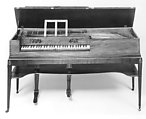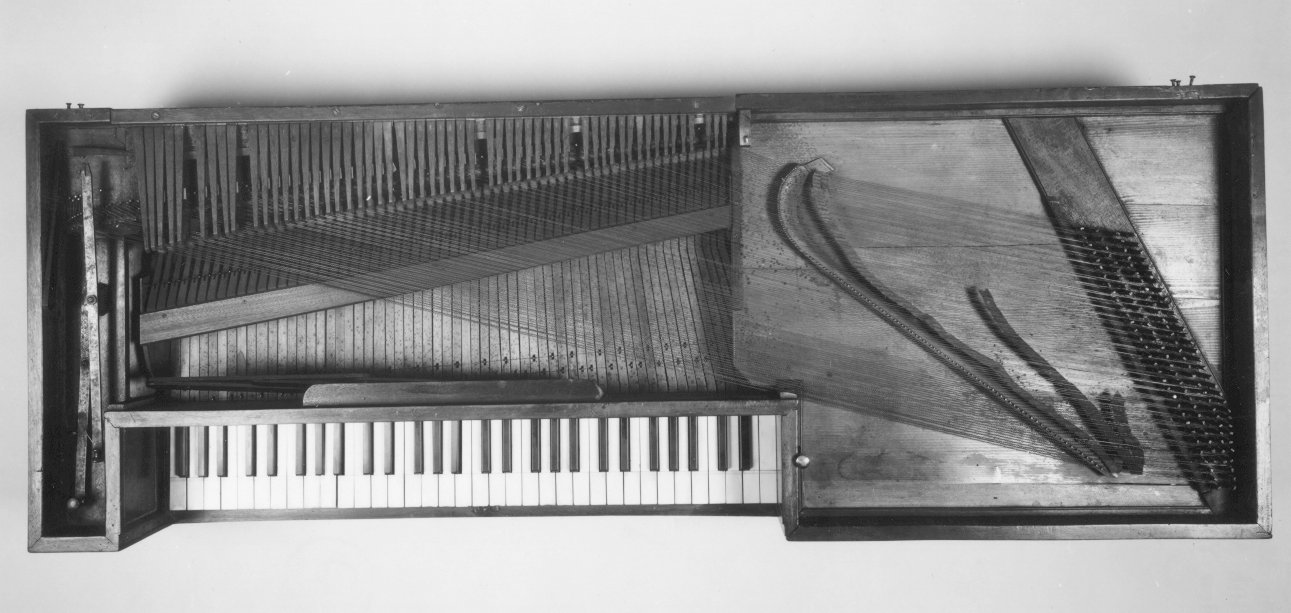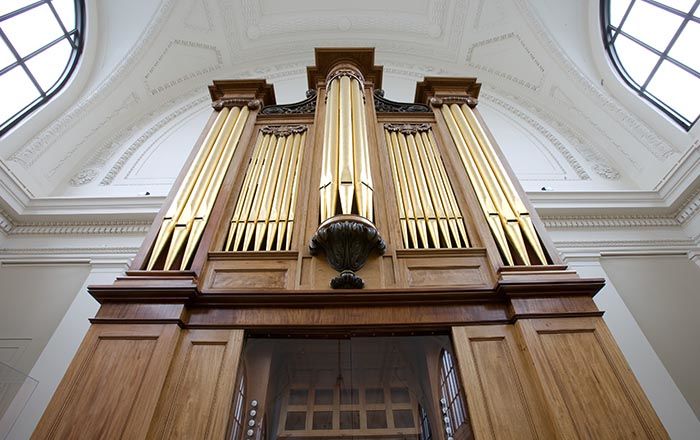Square Piano
George Astor German, active London
Not on view
George and John Jacob Astor were flute makers born in Germany who immigrated to London around 1778. John Jacob would move to the United States where he was a fur trader as well as a musical instrument dealer who sold instruments made by his brother and imported. As the popularity of square pianos grew in the late eighteenth century, George Astor began building instruments in the English style, like this lovely example in the Museum's collection.
Technical description: Mahogany and mahogany veneer case with light and dark ladder-style striping, on table-stand with shelf between 4 tapered legs with gilt brass bolt covers at top of legs; compass FF-f3 (61 keys), ivory naturals with molded fronts, accidentals of ebony slips on darkened blocks; English single action without escapement, wood overhead damper arms extending from hinged panel in spine, lifted by thin wood rods; unpierced oblong tuning pins running diagonally across soundboard, double-strung throughout, 24 strings wound; 2 hand levers in well to left of keyboard, the upper (rear) raising dampers, the lower (front) raising padded wooden batten against strings in front of nut; 2 pedals, the right raising portion of lid for swell effect, the left operating front hand lever; nameboard painted with flowers flanking inscription; collapsible music stand, attached to back of nameboard; strings webbed with red felt behind bridge, the bridge deeply undercut (ca. 6 cm); lid stick on left side only; dust cover of green silk.
This image cannot be enlarged, viewed at full screen, or downloaded.
This artwork is meant to be viewed from right to left. Scroll left to view more.



